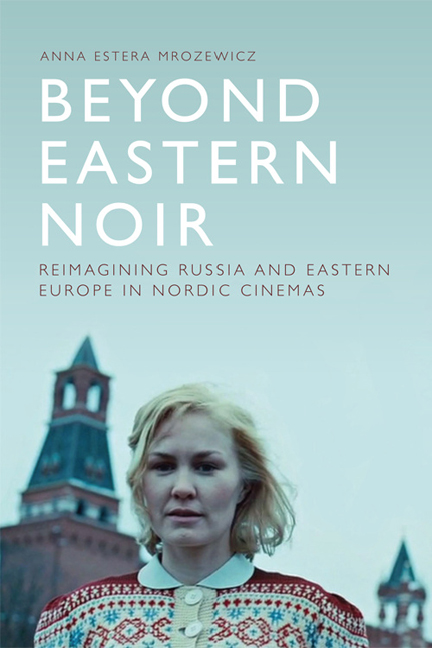Book contents
- Frontmatter
- Contents
- List of Figures
- Acknowledgements
- Introduction – The Iron Curtain Effect: Nordic Eastern Noir
- 1 Borders: Russia and Eastern Europe as a Crime Scene
- 2 Boundaries: Infiltrated Identities
- 3 The Baltic Boundary
- 4 Guilt and Shame in (Trans)national Spaces
- 5 Embodying the Fear of Russia: The Militarised Body
- 6 Polish Spectres in our House: Revisiting the Nordic Metaphor of the Home
- Afterword – Beyond Eastern Noir: Toward a New (Cinematic) Space
- Bibliography
- Filmography
- Index
3 - The Baltic Boundary
Published online by Cambridge University Press: 24 April 2021
- Frontmatter
- Contents
- List of Figures
- Acknowledgements
- Introduction – The Iron Curtain Effect: Nordic Eastern Noir
- 1 Borders: Russia and Eastern Europe as a Crime Scene
- 2 Boundaries: Infiltrated Identities
- 3 The Baltic Boundary
- 4 Guilt and Shame in (Trans)national Spaces
- 5 Embodying the Fear of Russia: The Militarised Body
- 6 Polish Spectres in our House: Revisiting the Nordic Metaphor of the Home
- Afterword – Beyond Eastern Noir: Toward a New (Cinematic) Space
- Bibliography
- Filmography
- Index
Summary
The Baltic Sea, which features centrally in two of the films discussed in previous chapters, can be located, alongside geopolitically strategic spaces such as Svalbard or Finnmark, within the Nordic continuum of environments central to the Cold War imagery. Whereas Svalbard and Finnmark are associated with extreme northern environments, occupying ‘a liminal space in the ecological and geographical spatiality of earth’ (Stenport 2015: 162), the Baltic Sea, which together with the Finnish and Norwegian eastern borders comprised the northern part of the Iron Curtain, signified a liminal space to the south-east during the Cold War. This utmost limit connoted the end of the Western world, not least because connections across the Baltic, which made travel possible, now ceased to exist. At the same time, the Baltic aroused ambivalence: on the one hand, it induced fear of infiltration by the Soviets (proven justified by the intrusion of a Soviet submarine that ran aground on the Swedish coast near Karlskrona in 1981); on the other, a (rather optimistic) perception of the Baltic framed it as a ‘“moat protecting the Swedish fortress”’ from Soviet military invasion (Malmborg 2001: 159).
Over the centuries, the Baltic often froze completely during severe winters (the last time being over the winter of 1946–7), due to which it was used as a land route between the distant shores (Marusek 2010). Whereas earlier in history the Baltic facilitated connections, with the Iron Curtain it became a wall rather than a passage. Despite multiple instances of successful escape involving GDR citizens fleeing to southern Denmark (Clemmensen 2012) or the inhabitants of communist Poland fleeing to the Danish ‘island of freedom’, Bornholm (Karaś 2017), the south-eastern shore of the Baltic became marginalised within both official and unofficial Nordic discourses. The existence of the eastern countries across the sea ‘faded from the consciousness of their northern neighbours’ (Kirby 1995: 378).
In view of these facts, it is not surprising that movement across the Baltic did not become a noteworthy theme in Nordic cinemas until after the Cold War. The political changes around 1989 enabled a revival of (old) routes and made it possible to establish new ties (Karlsson and Zander 2000: 7). Some even believed that ‘Norden can be rearticulated as a Baltic project’ (Wæver 1992: 100).
- Type
- Chapter
- Information
- Beyond Eastern NoirReimagining Russia and Eastern Europe in Nordic Cinemas, pp. 93 - 118Publisher: Edinburgh University PressPrint publication year: 2018



